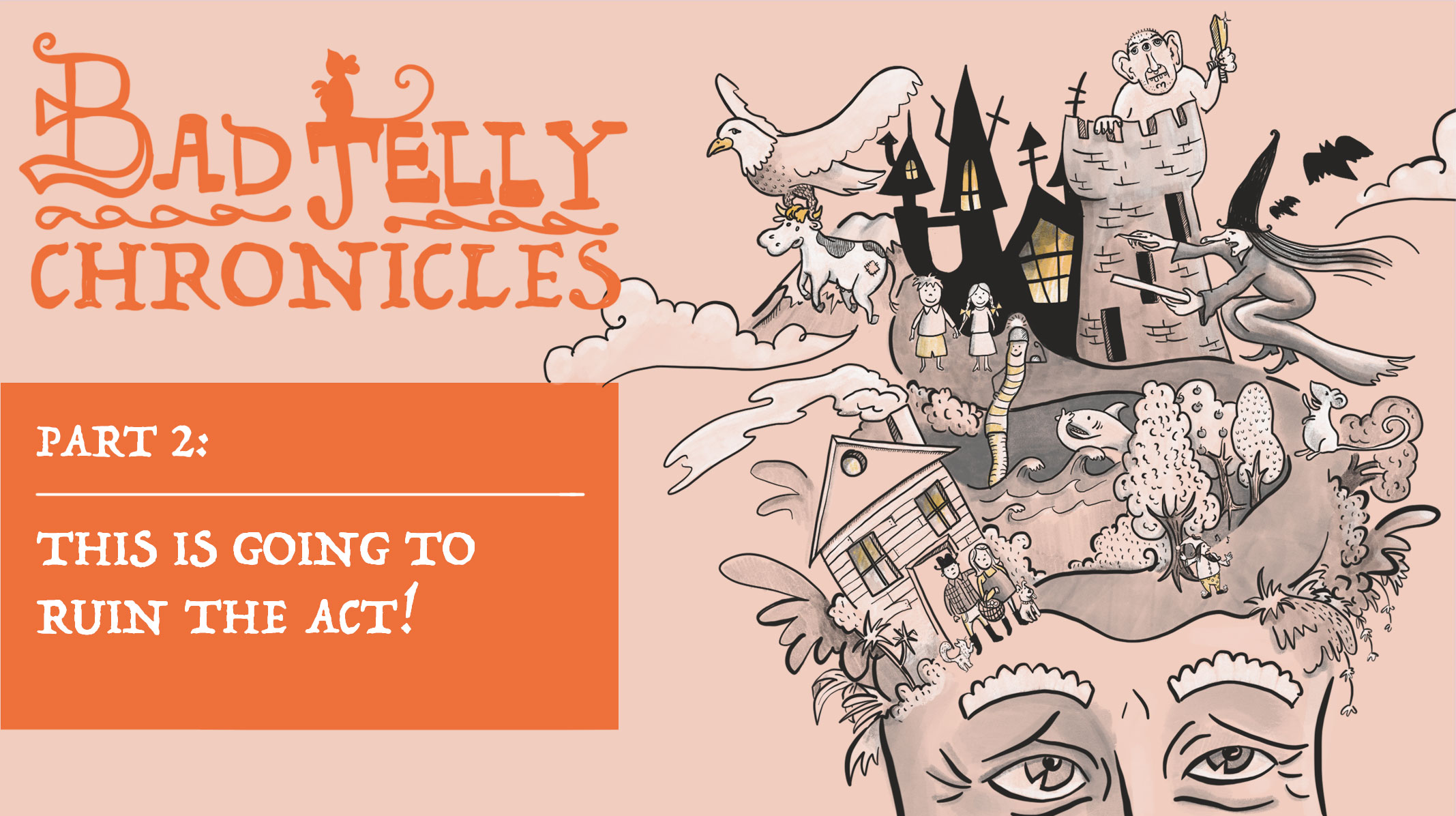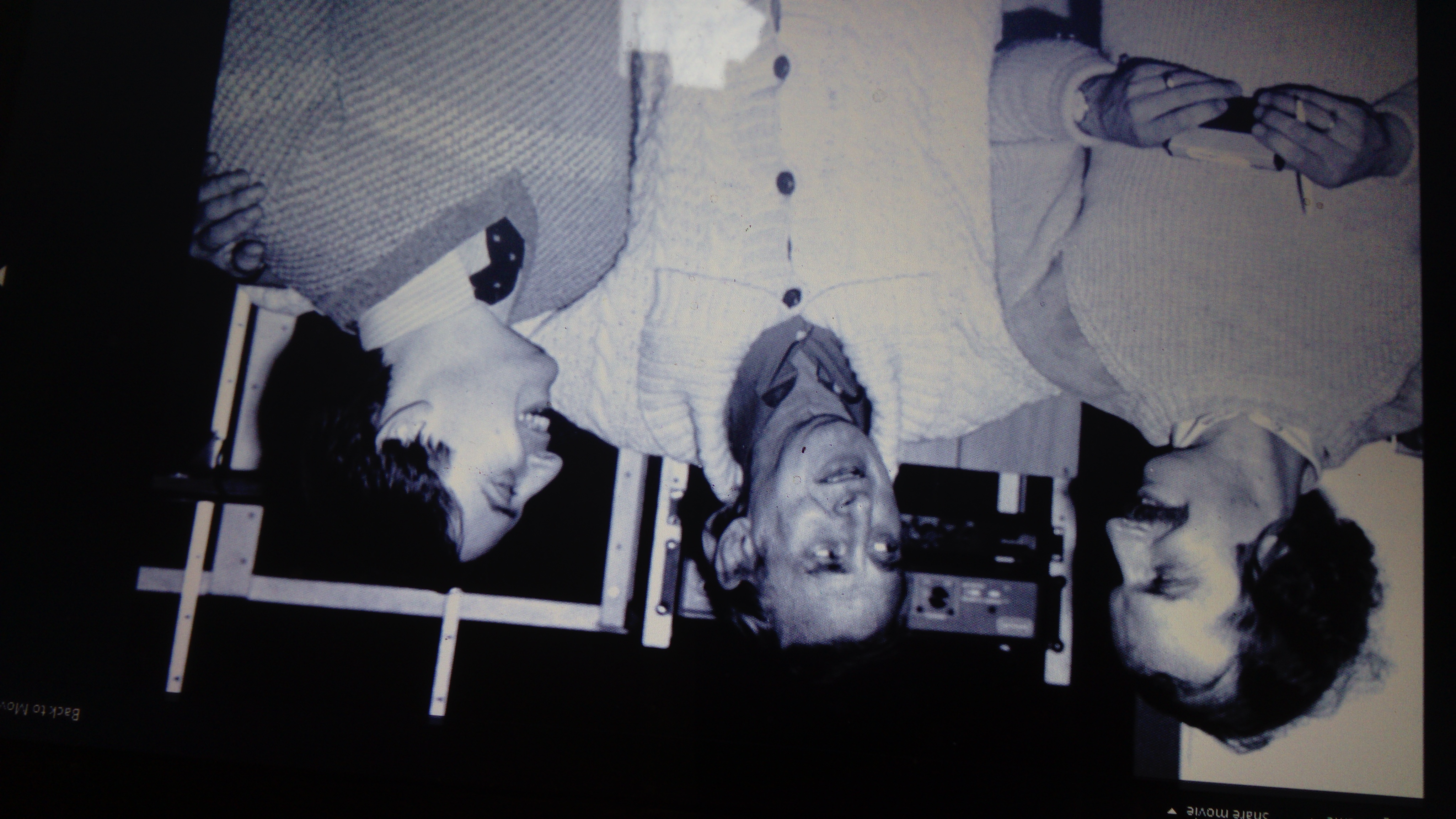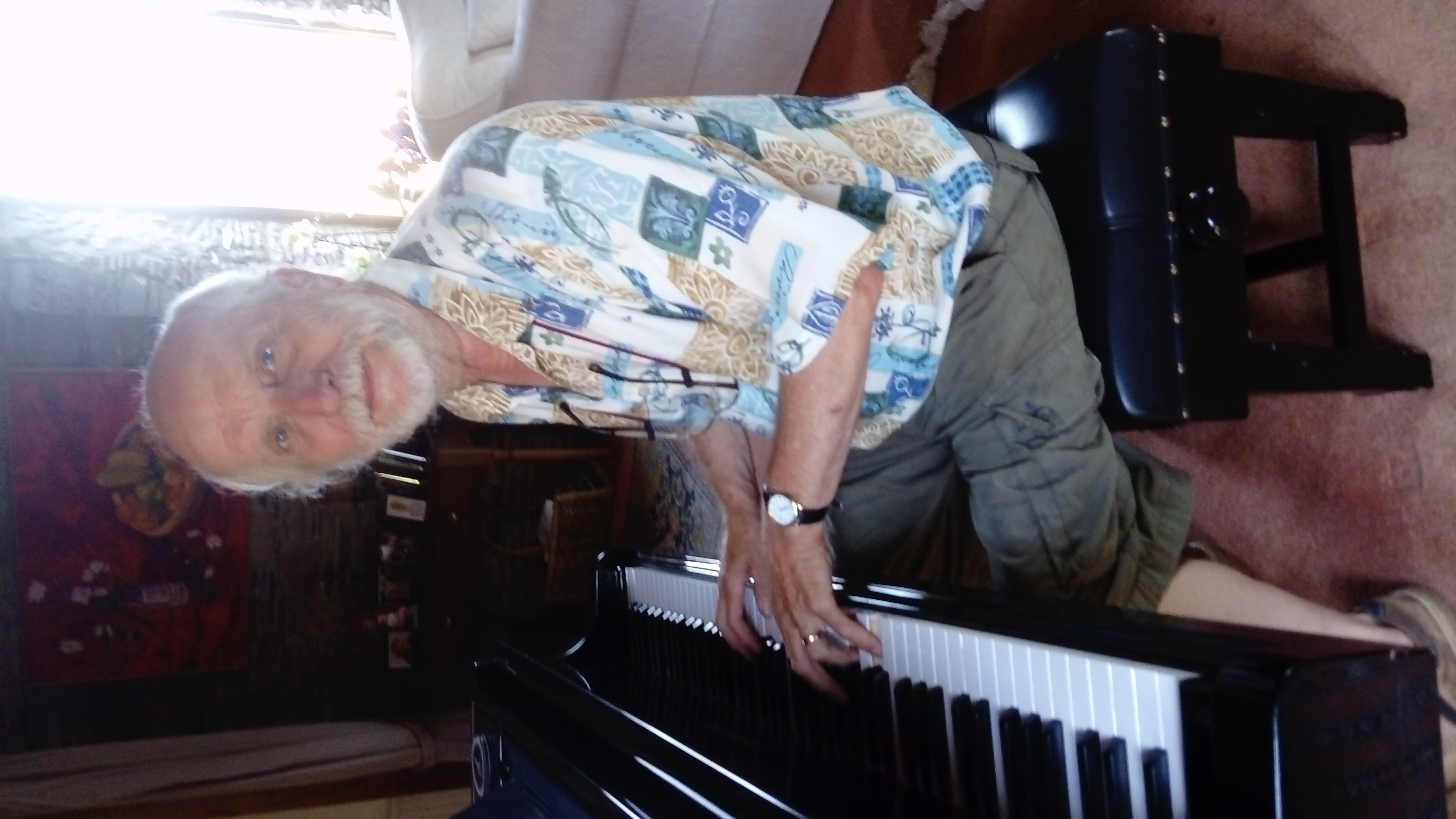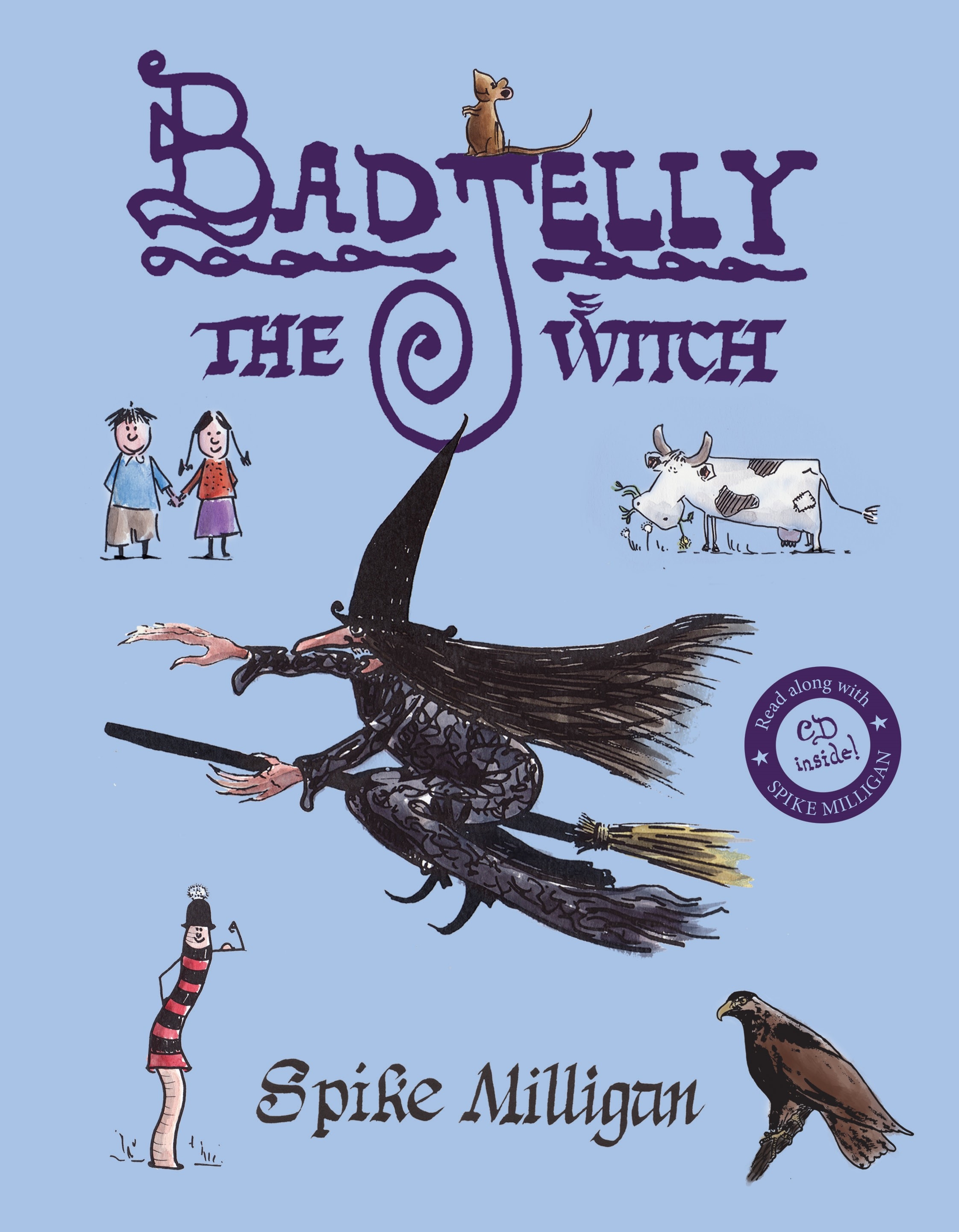How New Zealand developed an obsession with Spike Milligan’s beloved baddest witch in all the world.
In this five-part series, Gemma Gracewood adventures through the many iterations of Spike Milligan’s Badjelly the Witch to find out why New Zealand loves her the most, and why the U.K. might finally be ready to embrace their long-neglected wickedest witch. (Read Episode One here)

When Spike Milligan stepped into the studio to record an audio version of Badjelly the Witch in 1974, he had a good two decades’ worth of radio comedy performance under his belt, and he’d heavily road-tested the out-loud version at his children’s bedsides. Any level-headed Goon fan would bet on a Badjelly LP turning out very, very well.
What lifts the record into the sublime is Milligan’s vocal work: his characterisations, sound effects, and on-the-spot improvisations that imply all manner of intriguing back stories. The bit where the shark complains ‘this is going to ruin the act!’. The existence of Bare Bottom Land. And, most memorably, ‘Stinky poo, stinky poo! Knickers! Knickers! Knickers!’
What lifts the record into the sublime is Milligan’s vocal work: his characterisations, sound effects, and on-the-spot improvisations that imply all manner of intriguing back stories.
There’s a raw quality to Milligan’s performance that adds to the charm, says artist and curator Finn McCahon-Jones, who programmed Badjelly the Witch countless times during his legendary 21-year stint hosting the Kids’ Show on Auckland radio station 95bFM. ‘He forgets to change his voice between characters. It just makes him so real, him running out of breath, or him banging his fist on the lectern when Dulboot comes in,’ says McCahon-Jones. ‘There’s so many moments that I realise you have to be so comfortable with performing to be able to let those things slide, because any one of us would just retake the edit. But often the life dies when you do that.’
Without a doubt, the other magic ingredient is Ed Welch’s score. Badjelly the Witch begins with the warm strains of a string section, as Spike introduces Tim and Rose. Soon, we hear the children’s theme, a cheery leitmotif in the people’s key of C. It’s an all-purpose family tune: Mum blows it on her trombone; Pom-Pom the puppy-dog plays it on the piano with his tail; a flute accompanies Tim and Rose as they walk down to see Lucy the Cow. Later, it dramatically steps up to an unresolved note — danger is imminent! — then tumbles into a cacophony of percussion as Badjelly’s own terrifying theme erupts all around.

Now 72 years young, Welch has a CV as tall as one of Dulboot’s legs. Stars like Cilla Black and Shirley Bassey sang his songs. He composed scores for classic British sex farces, and once co-wrote a Eurovision Song Contest entry for Iceland. He’s composed many television theme tunes for children’s series, sitcoms, and game shows. Hold onto your caps while I tell you this: Ed wrote the iconic Thomas the Tank Engine theme song.
Back when he met Milligan, Ed was a recently-graduated not-quite-somebody in his mid-20s, looking for a break. ‘I was classically trained at Trinity College,’ he explains from his home in South Devon. He had expected to spend his career teaching music but, with a knack for composing and arranging, he soon jumped ship to United Artists Music, getting himself amongst the pop and theatrical music scene.
One day in the United Artists office, discussion turned to a packet of poems that a certain Spike Milligan had sent in, searching for somebody to help him put them to music. Young Ed was dismissed as too green, but in one of those quick-thinking moments that can change a life, he took a peek at the envelope, noted down Spike’s address, and wrote to him independently. The cheek of it! Months of nothing went by, then Milligan’s agent, Norma Farnes, got in touch to say: come in and meet Spike.

‘He quickly took me under his wing,’ Ed remembers. ‘We never, ever had a row.’ It became a decades-long collaboration; Badjelly was one of their earliest projects, and led to more than 60 episodes of the kids’ series Wolves, Witches and Giants, a divine version of The Snow Goose, and more. Ed’s memory of the Badjelly recording is patchy, 1974 being a long time ago now, but he says it was a quick job, easy, and very, very funny. ‘My wife Jane would have typed out the relevant bit of script onto the music score and we stuck it on with sellotape. We had about 20 pages like that. There were a lot of technical things to consider: timing, not overwhelming the voice. There were bits where Spike actually stood in his booth with the orchestra around him, because it was very vital, the timing, at one point. We needed to get it exactly right.’ The orchestra would get themselves into trouble, giggling over Spike’s improvisations, and have to start over.
The orchestra would get themselves into trouble, giggling over Spike’s improvisations, and have to start over.
‘When you’ve finished a work and you sit back and listen, you know instantly whether it’s going to be good,’ says Ed. He knew it was ‘very, very good’ right away. ‘The energy that Spike put into the narration is extraordinary.’ There was, however, one bit where Spike’s vocal talents failed him: when the tin-lion goes ‘Oh dear, all this rain is making me rusty,’ Ed himself had to come to the rescue, voicing the ‘Roar-roar, squeak-squeak’ bit.
The record was released with a wonderful B-side collection of songs both silly — ‘On the Ning Nang Nong’ — and outrageously romantic — ‘I’ve Got That Photograph of You’. (Once you learn that Spike’s wife Paddy, Jane’s mother, was diagnosed with breast cancer around the time of Badjelly’s birth, and died when Jane was just 12, it’s very difficult to listen to that song without your heart breaking: ‘I’ve got that photograph of you, it’s in my head, and it won’t ever fade away…’)
In New Zealand, the Badjelly the Witch record was a straight-up hit. I asked some friends (okay, everyone I know on social media) for their Badjelly memories, and it was like watching Binklebonk’s tree grow bigger and bigger and bigger as the childhood flashbacks sprang forth. They wrote of curling up in Grandma’s La-Z-Boy to listen; of ‘climbing high onto my father’s wood-turning lathe to switch on his big old radiogram thing’; of parents dubbing the record onto cassette for long car journeys; of lying on the couch with a broken leg playing Badjelly ‘again and again and again’; of cousins from over the road swinging by for a listen.
I asked some friends for their Badjelly memories, and it was like watching Binklebonk’s tree grow bigger and bigger and bigger as the childhood flashbacks sprang forth.
A common theme was how very personal our Badjelly-listening experiences were. For veteran comedy producer Paul Horan, Badjelly the Witch ‘was about me discovering my own thing. Listening in bed to a transistor was the start of me defining my own music and comedy taste. Badjelly was one of the first bits of comedy that I called mine’.
The other common theme: Dick Weir.
READ EPISODE THREE: New Zealand radio broadcasters, including the great Dick Weir, describe the blessing, and curse, of Badjelly’s wild popularity.


Gemma Gracewood
Gemma Gracewood is a writer, producer and director who peddles in delight. A fifth generation Pākehā New Zealander, she has toured the world in a ukulele orchestra, made award-winning shows about chain-reaction machines, and is currently the editor of Letterboxd. Her favourite saying used to be ‘you can sleep when you’re dead!’ but now she has a four year old and that’s not funny shut up.



